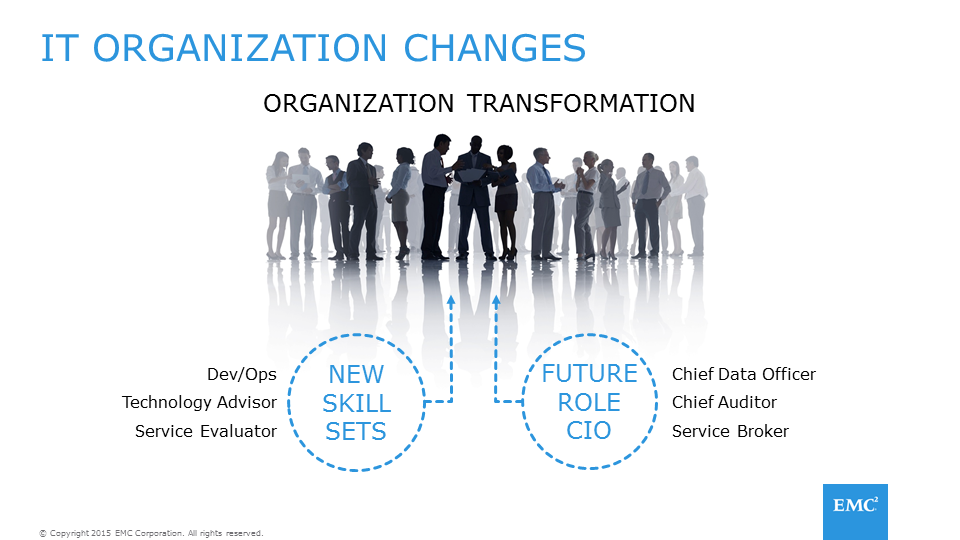As business continues to shift the expectations and types of demands it is placing on IT, our technology, roles and responsibilities evolve in equal measure. Whether you are a CIO creating IT strategy or an IT practitioner implementing the strategy, now is the time to prepare for the changes ahead.
 As an IT practitioner:
As an IT practitioner:
- You must be intellectually curious about the technologies rising up on the edges of mainstream. My best advice for today’s IT organization is to build your next internal application in a microservices model. Even if you don’t need to, do it anyway so you get experience using the new application languages, platforms, data fabrics, and cloud infrastructures. It will help you become an expert in things like Docker, Cloud Foundry, Kubernetes and Mesos. These are technologies that CIOs and other tech savvy C-suite executives have a desire to use because they’ve heard they can actually enable business disruption much faster than traditional IT.
- After you’ve established that expertise, become a tech advisor to your company’s business units. You will find developers in every enterprise that are thinking about how they are going to build the next app or software disruption. They are desperate for people to help them with that endeavor. And if you have the expertise, they will talk with you and value your insights.
- Understand that the operating model on this disruptive side will be more like dev/ops, so you need to build expertise in that as well. For example, Cloud Foundry has no separate test cycle. The entire model is paired programming using a test driven development methodology. There are literally two developers working on every line of code – one writing the code and one critiquing the code in real time. It is a radically different approach that accelerates the time to business value in a dramatic way. If you know how to do it correctly, you can be the trusted partner who brings it into your organization and helps it take hold.
Just like the opportunity for IT practitioners to develop new skill sets, there are several ways that CIOs can get ahead of these changes too.
- Going forward, CIOs are likely to operate as IT service brokers more than proprietors of all things IT. You need to understand which cloud (or combination of clouds) to use, which technology to use, which options have the best economics, and which can make your business move faster.
- The second change is less interesting, but equally important – prepare to become some variation of Chief Auditor. It isn’t feasible to expect a business unit or a marketing organization to police itself. For example, business units are not qualified to understand the IT impacts to Sarbanes Oxley or HIPPA compliance. They are focused on optimizing business processes and disrupting their industry. It is unlikely that you will be able to prevent certain behaviors from happening, but you do need to know where they are taking place, so you can help people mitigate risk and be ready to intervene.
- The last and most interesting is that if the currency of the next generation enterprise is data, then we need someone to know where all that data is. The value of big data is the ability to reason across many diverse datasets to gain interesting correlated insights, but the data in enterprise environments today is highly fragmented. This is a perfect opportunity for the CIO to be the person who understands how to access all the company’s datasets. IT can become the consolidating point where we actually gather an understanding of the data available to the enterprise and present that back to every business function so they have a complete picture.
The exciting news for IT professionals continues to be that this transformation is happening. IT will be more important than ever as we go forward and there are many ways we can respond to the new demands. The bad news? We’re still not going to get much sleep for the next 10 years.
This post continues John’s thoughts from IT Technology Evolution Over the Next 10 Years and both are based on his CiscoLive! keynote, “The Evolution of the IT Career.” A recording of the presentation is available here (registration required).